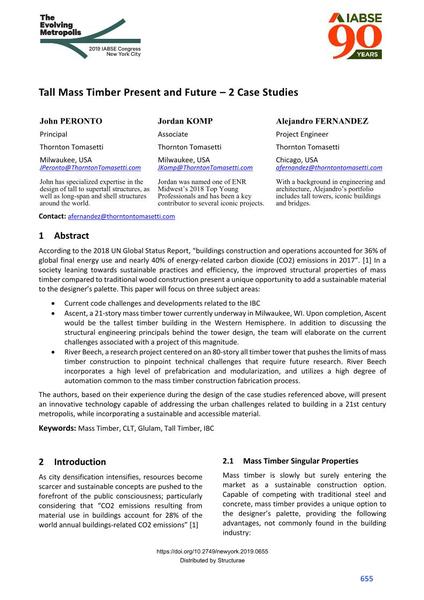Tall Mass Timber Present and Future – 2 Case Studies

|
|
|||||||||||
Bibliographic Details
| Author(s): |
John Peronto
(Thornton Tomasetti)
Jordan Komp (Thornton Tomasetti) Alejandro Fernandez (Thornton Tomasetti) |
||||
|---|---|---|---|---|---|
| Medium: | conference paper | ||||
| Language(s): | English | ||||
| Conference: | IABSE Congress: The Evolving Metropolis, New York, NY, USA, 4-6 September 2019 | ||||
| Published in: | The Evolving Metropolis | ||||
|
|||||
| Page(s): | 655-662 | ||||
| Total no. of pages: | 8 | ||||
| DOI: | 10.2749/newyork.2019.0655 | ||||
| Abstract: |
According to the 2018 UN Global Status Report, “buildings construction and operations accounted for 36% of global final energy use and nearly 40% of energy-related carbon dioxide (CO₂) emissions in 2017”. [1] In a society leaning towards sustainable practices and efficiency, the improved structural properties of mass timber compared to traditional wood construction present a unique opportunity to add a sustainable material to the designer’s palette. This paper will focus on three subject areas:
The authors, based on their experience during the design of the case studies referenced above, will present an innovative technology capable of addressing the urban challenges related to building in a 21st century metropolis, while incorporating a sustainable and accessible material. |
||||
| Keywords: |
glulam CLT Mass Timber Tall Timber IBC
|
||||
